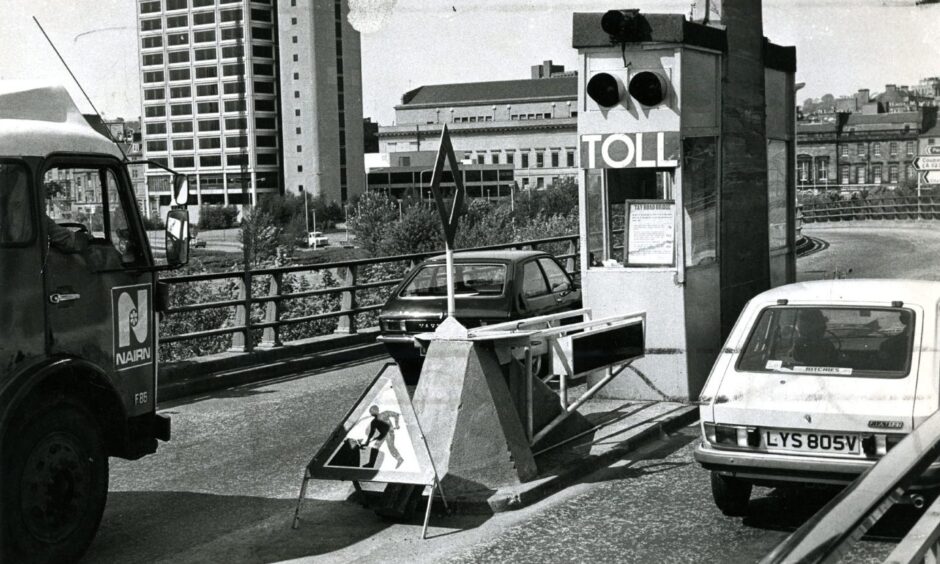
The Tay Road Bridge tolls were unwanted from the start.
Charges were branded “preposterous” while the crossing was still under construction.
The hope of a bridge coming to fruition at one point seemed like an impossibility.
The visionary town planner James Thomson first proposed making use of the foundations of the old rail bridge for a road crossing in 1918.
The idea was rejected by the Ministry of Transport but numerous campaigns were launched over the years to have a bridge built.
Hugh Molson MP, joint parliamentary secretary to the Ministry of Transport, said there was no money available to fund the Tay Road Bridge in 1953.
The Conservative Government made it clear from the beginning that the project did not stand high on their long list of Scottish priorities.
In fact, they said, if the city of Dundee and the counties of Fife and Angus felt so strongly about it, they could go and build it themselves.
But the Government did give their blessing to the concept and permission to borrow the necessary £4 million, which would be repaid over 60 years from vehicle tolls.
A lack of enthusiasm for Tay Road Bridge tolls
Once William Fairhurst’s design for the bridge was finalised, tenders for the work were invited and the firm of Duncan Logan was chosen, which was headed by his son, Willie.
Work cost around £6m and it was built with 140,000 tons of concrete, 4,600 tons of mild steel and 8,150 tons of structural steel.
In December 1965 the Tay Road Bridge Joint Board announced there would be
a half-crown toll for private cars and 10 shillings for commercial vehicles.
Although no one on the board favoured tolls in principle, they decided that the
irrefutable facts of economic life made a levy unavoidable.
Dundee treasurer Harry Dickson hoped high tolls would not drive away custom and wondered what real time saving the bridge would produce from Dundee to Edinburgh.
Councillor John Stewart dourly asked for his dissent to this scheme to be logged and the Fife representatives were “rather taken aback by this lack of enthusiasm”.
Fife convener John McWilliam said sharply that Fife would never have come in as Dundee’s partner if Dundee had advanced the same arguments four or five years ago.
When the cost of the bridge tolls was made public a howl of protest went up.
Despite the withdrawal of the existing vehicular ferries, one road haulier threatened: “We’ll only use the bridge in extreme cases of emergency”.
A bus operator protested: “Ten shillings is making a mockery of the whole thing.”
A spokesman for the area’s bus and road transport services described the 10 shillings charge as “preposterous” and the protest continued before the 1966 opening.
Glenrothes District Council lodged a resolution to scrap the bridge tolls at the annual conference of the District Councils’ Association for Scotland in June 1966.
The logic of the balance sheet prevailed.
Some people are on the bridge…
The Beatles were about to embark on their final tour of America and England had just won the World Cup when the Queen Mother performed the opening on August 18 1966.
As a few young Nationalists put up posters protesting about tolls, there were a few anxious moments for police after an anonymous phone call made hoax bomb threats.
When Welshman Hugh Pincott handed over his half-a-crown to toll attendant James Mann, he became the first of over a hundred million drivers to cross the bridge.
People came from all over the country.
On a gala evening, one bus company owner laid on three buses simply to take 123 pensioners over the new bridge and back.
Around 20,000 vehicles were estimated to have crossed the bridge on the first day, despite the fact that the traffic was so dense it barely broke walking pace.
Little changed during its first 42 years with attempts to scrap the tolls brushed aside, including a 1985 Commons bill presented by Dunfermline East MP Gordon Brown.
The dawn of devolution in 1999 saw four of Scotland’s 30-odd crossings tolled.
Political attention focused on the Skye Bridge tolls imposed by the Tories and bitterly opposed by the Liberal Democrats.
Central belt-dominated Labour were quite happy to keep their junior partners in coalition government happy and the Skye tolls were scrapped in 2004.
Charges on the Erskine Bridge across the Clyde, in the heart of Labour country, were scrapped following a review on tolled bridges by transport minister Tavish Scott.
Tolls on the Tay and Forth were retained.
That day, March 2 2006, The Courier launched the Scrap the Bridge Tolls campaign.
Its aim was to persuade ministers of the “unfairness of their decision”, which was described as being a “subsidy for the west coast but a tax on the east coast”.
Campaign to end Tay Road Bridge tolls gathers pace…
Leading campaigners were Tricia Marwick, Bruce Crawford and Shona Robison, and they convinced the nationalist leadership to adopt abolition as policy.
Labour Fife MSPs found themselves at loggerheads with their own party.
Initially the Scottish Tories were in two minds.
The SNP forced a vote which was defeated along party lines.
Lib Dem MSPs, who said they had campaigned to scrap the Tay tolls, found
themselves voting to keep them and were named and shamed for their troubles.
There were several false dawns until the Holyrood election campaign of 2007, when both Labour and the Lib Dems agreed to make scrapping the tolls party policy.
The SNP emerged victorious by a single seat and went on to form a government.
That government’s first piece of legislation was to honour the pledge to abolish the tolls.
Labour, and later the Lib Dems, did not vote against the measure.
First Minister Alex Salmond said scrapping the tolls ended “40 years of injustice for the
people of Fife, Tayside and the Lothians”.
And a Dunfermline East MP who tried to abolish the tax in 1985 had risen through the ranks by the time the legislation was given royal assent on January 24 2008.
A certain Gordon Brown was now prime minister.
Time flies.
Usually there is a two-month period between an act receiving royal assent and coming into force but the SNP fast-tracked it to bring it in six weeks earlier.
The result of our campaign and the vote by MSPs was that, on February 11 2008, Gordon Struthers, of Newport became the first motorist to cross the Tay toll free.
Ending 42 years of hurt.
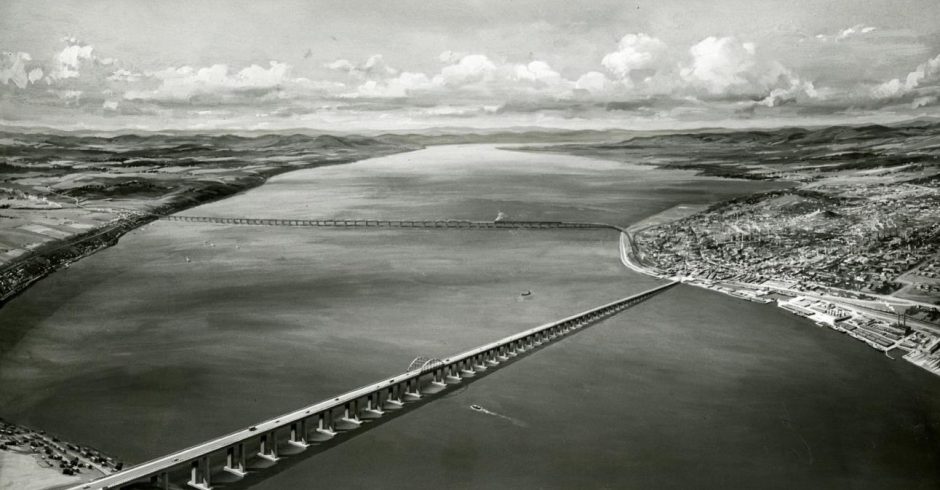
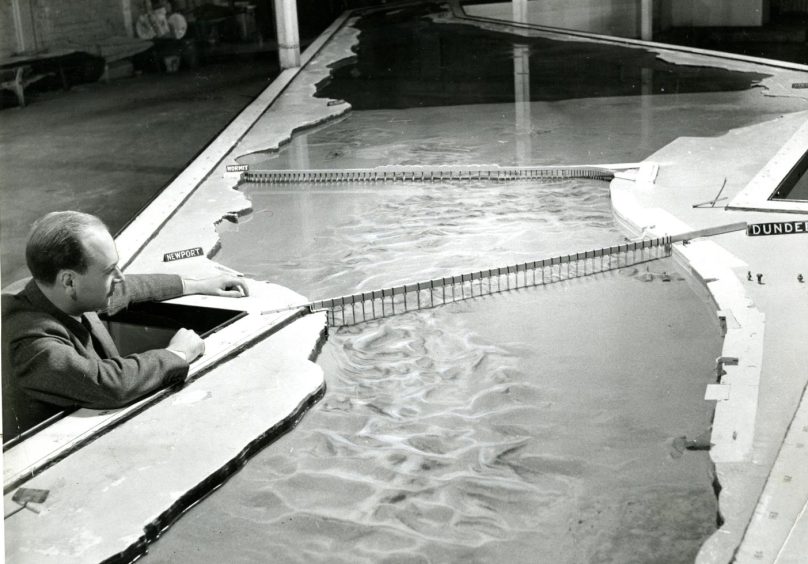
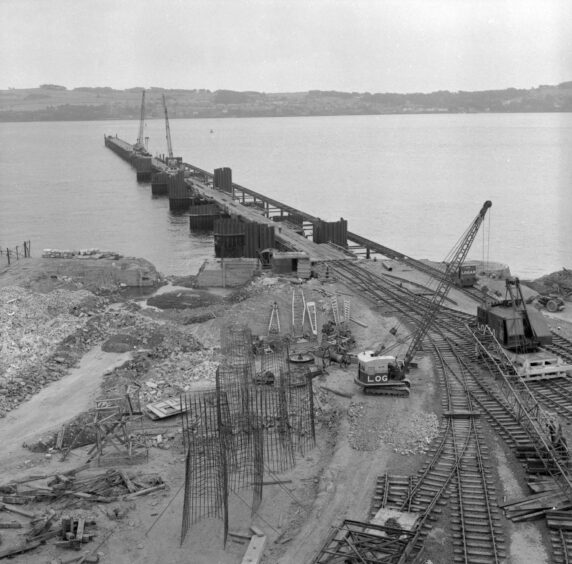
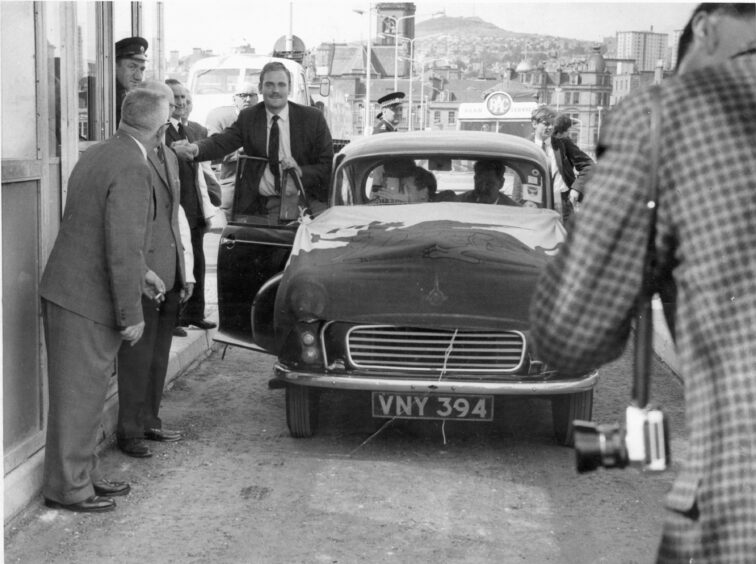
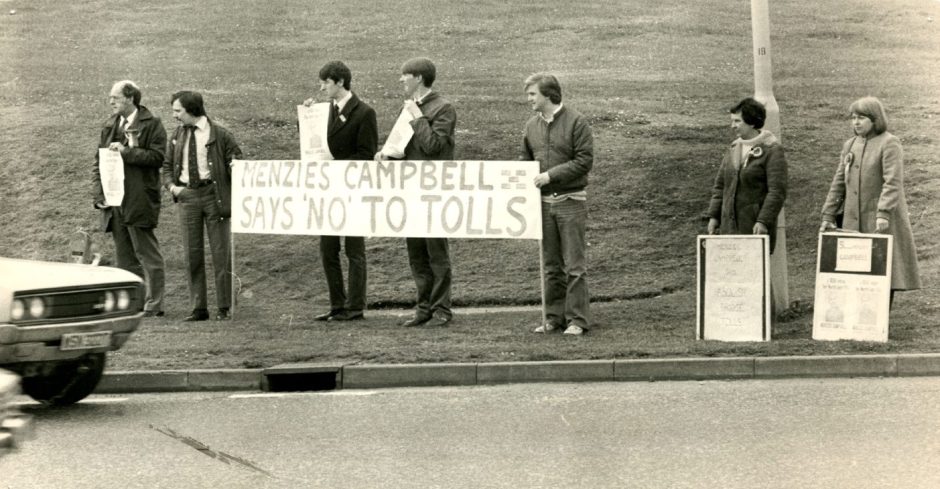
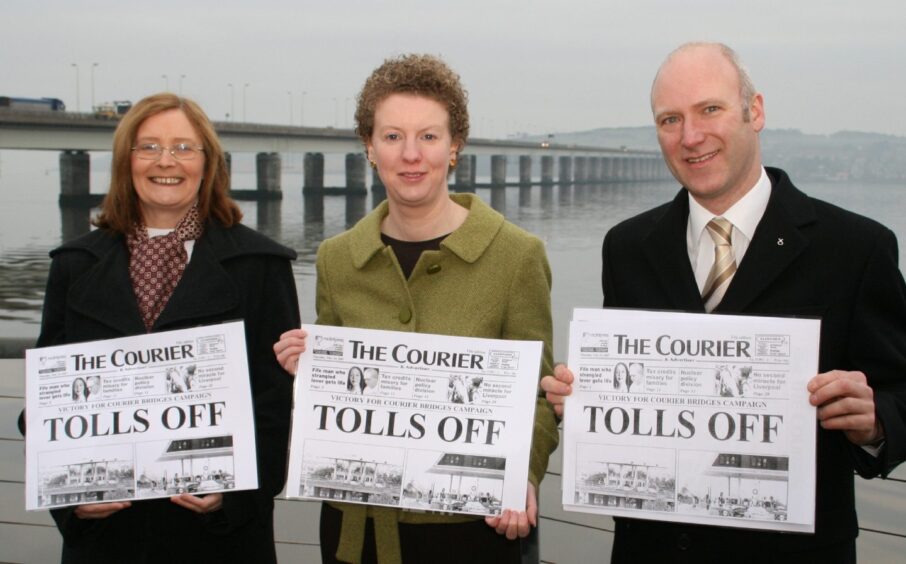
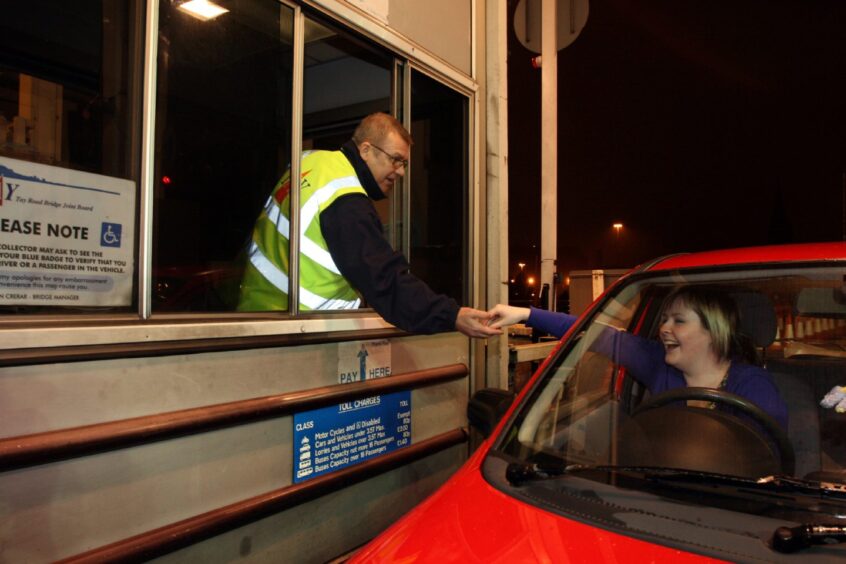
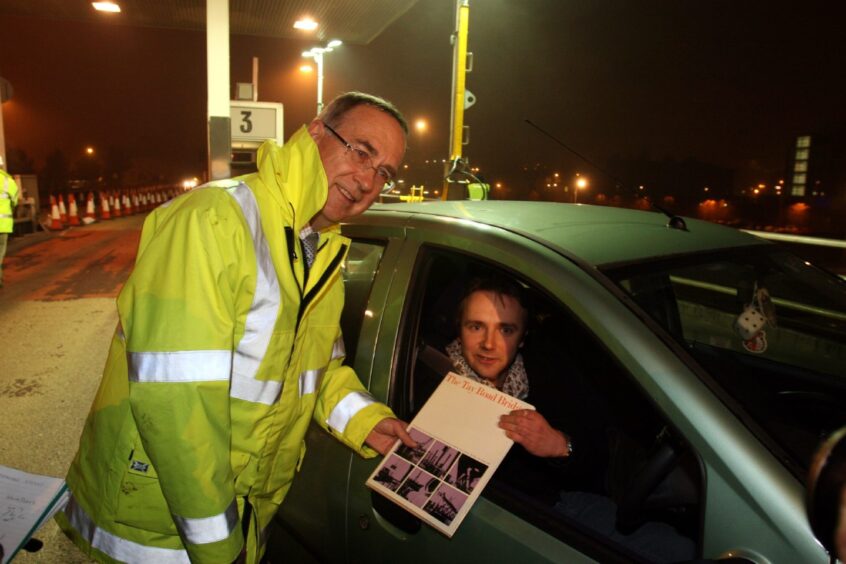
Conversation